Dacia Jogger vs Toyota C-HR – Differences & prices compared
Compare performance, boot space, consumption and price in one view.
Find out now: which car is the better choice for you – Dacia Jogger or Toyota C-HR?
The Dacia Jogger (MPV) comes with a Full Hybrid, LPG or Petrol engine and Automatic or Manuel transmission. In comparison, the Toyota C-HR (SUV) features a Full Hybrid or Plugin Hybrid engine with Automatic transmission.
When it comes to boot capacity, the Dacia Jogger offers 607 L, while the Toyota C-HR provides 447 L – depending on how much space you need. If you’re looking for more power, decide whether the 140 HP of the Dacia Jogger or the 223 HP of the Toyota C-HR suits your needs better.
In terms of consumption, the values are 4.70 L per 100 km for the Dacia Jogger, and 0.80 L for the Toyota C-HR.
Price-wise, the Dacia Jogger starts at 15400 £, while the Toyota C-HR is available from 29100 £. Compare all the details and find out which model fits your lifestyle best!
Dacia Jogger
The Dacia Jogger offers a spacious and versatile interior, making it an excellent choice for families seeking practicality and comfort. Its design combines the robustness of an SUV with the functionality of an estate, providing a reliable option for various driving needs. With a focus on affordability, the Jogger ensures that essential features are accessible without compromising on quality.
details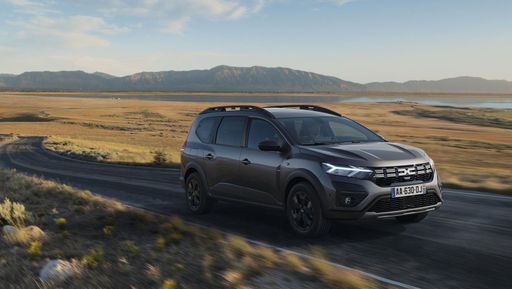 @ dacia-presse.de
@ dacia-presse.de
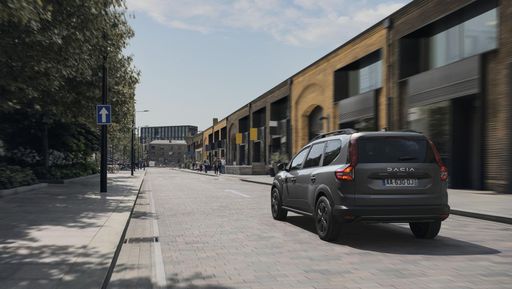 @ dacia-presse.de
@ dacia-presse.de
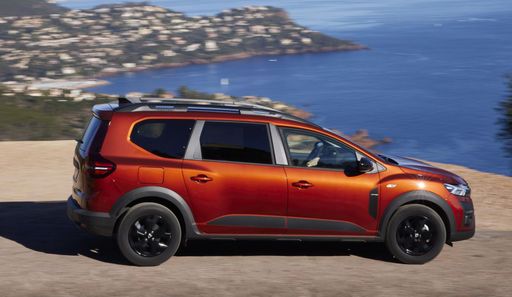 @ dacia-presse.de
@ dacia-presse.de
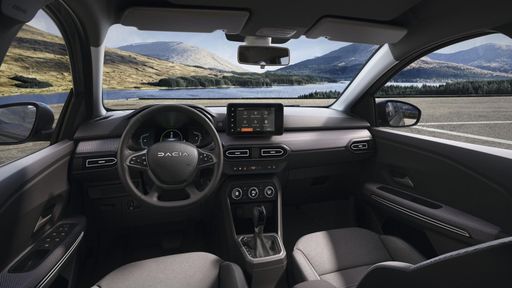 @ dacia-presse.de
@ dacia-presse.de
Toyota C-HR
The Toyota C-HR stands out with its distinctive and bold design that combines sleek, angular lines with a sporty posture. Its comfortable and stylish interior is equipped with advanced technology features, providing a seamless driving experience. The vehicle offers impressive handling and performance, making it a compelling choice for those who appreciate a blend of practicality and flair on the road.
details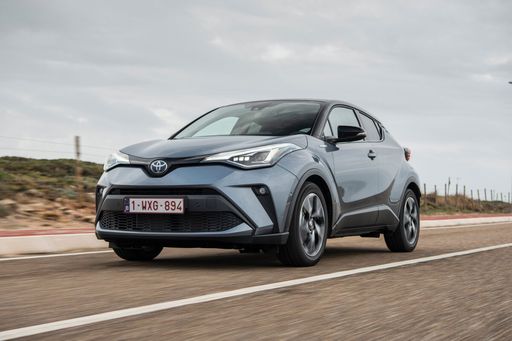 @ Toyota
@ Toyota
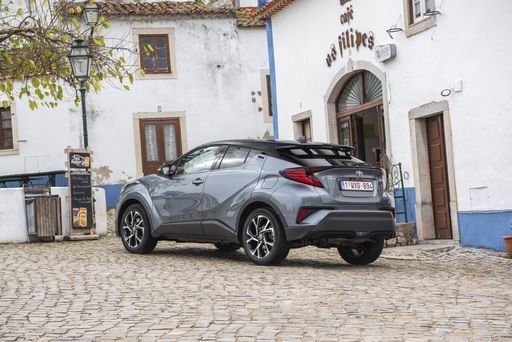 @ Toyota
@ Toyota
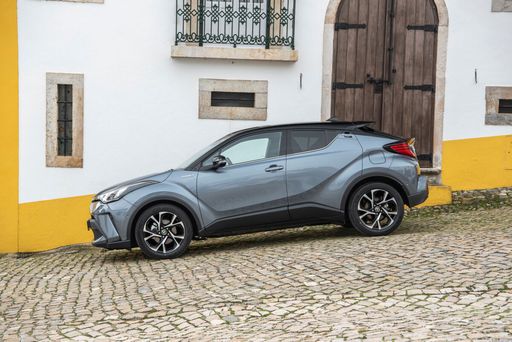 @ Toyota
@ Toyota
 @ Toyota
@ Toyota
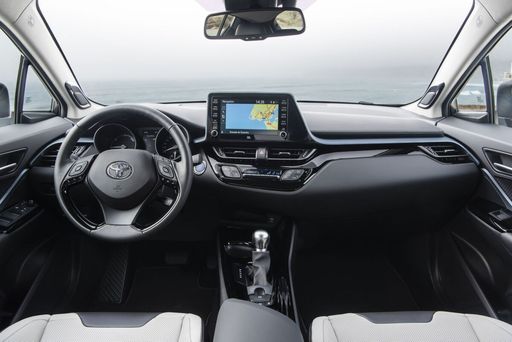 @ Toyota
@ Toyota

|

|
|
|
|
Costs and Consumption |
|
|---|---|
|
Price
15400 - 23400 £
|
Price
29100 - 42800 £
|
|
Consumption L/100km
4.7 - 7.7 L
|
Consumption L/100km
0.8 - 5.1 L
|
|
Consumption kWh/100km
-
|
Consumption kWh/100km
-
|
|
Electric Range
-
|
Electric Range
68 km
|
|
Battery Capacity
0.60 kWh
|
Battery Capacity
-
|
|
co2
105 - 137 g/km
|
co2
17 - 115 g/km
|
|
Fuel tank capacity
40 - 50 L
|
Fuel tank capacity
43 L
|
Dimensions and Body |
|
|---|---|
|
Body Type
MPV
|
Body Type
SUV
|
|
Seats
5 - 7
|
Seats
5
|
|
Doors
5
|
Doors
5
|
|
Curb weight
1251 - 1460 kg
|
Curb weight
1505 - 1755 kg
|
|
Trunk capacity
160 - 607 L
|
Trunk capacity
350 - 447 L
|
|
Length
4547 mm
|
Length
4362 mm
|
|
Width
1784 mm
|
Width
1832 mm
|
|
Height
1674 mm
|
Height
1558 - 1564 mm
|
|
Payload
393 - 582 kg
|
Payload
375 - 425 kg
|
Engine and Performance |
|
|---|---|
|
Engine Type
Full Hybrid, LPG, Petrol
|
Engine Type
Full Hybrid, Plugin Hybrid
|
|
Transmission
Automatic, Manuel
|
Transmission
Automatic
|
|
Transmission Detail
Automatic Gearbox, Manual Gearbox
|
Transmission Detail
-
|
|
Drive Type
Front-Wheel Drive
|
Drive Type
Front-Wheel Drive, All-Wheel Drive
|
|
Power HP
91 - 140 HP
|
Power HP
140 - 223 HP
|
|
Acceleration 0-100km/h
9.8 - 13.2 s
|
Acceleration 0-100km/h
7.4 - 9.9 s
|
|
Max Speed
167 - 174 km/h
|
Max Speed
175 - 180 km/h
|
|
Torque
160 - 200 Nm
|
Torque
-
|
|
Number of Cylinders
3 - 4
|
Number of Cylinders
4
|
|
Power kW
67 - 103 kW
|
Power kW
103 - 164 kW
|
|
Engine capacity
999 - 1598 cm3
|
Engine capacity
1798 - 1987 cm3
|
General |
|
|---|---|
|
Model Year
2024 - 2025
|
Model Year
2024 - 2025
|
|
CO2 Efficiency Class
C, D
|
CO2 Efficiency Class
C, B
|
|
Brand
Dacia
|
Brand
Toyota
|
Dacia Jogger
Introducing the Dacia Jogger: A New Era of Affordable Versatility
The Dacia Jogger has revolutionised the automotive industry by combining practicality and cost-efficiency with innovative features. This multi-purpose vehicle is perfect for families and adventurers alike, offering remarkable versatility alongside a competitive pricing strategy.
Powertrain Options: A Broad Spectrum of Choice
Dacia provides a range of powertrain options to cater to diverse preferences. The Jogger comes equipped with a selection of full-hybrid and turbocharged petrol engines. The full-hybrid version delivers a robust output of up to 140 PS, coupled with an impressive fuel efficiency of 4.7 to 4.8 L/100km. For those preferring a conventional setup, the ECO-G petrol engines offer up to 110 PS, promising a reliable and economical drive with a fuel consumption ranging from 5.7 to 7.7 L/100km.
Innovation in Every Journey
One of the notable innovations in the Jogger is its intelligent use of space. The model boasts a generous seating capacity, comfortably accommodating 5 to 7 passengers, depending on the configuration. With features like adjustable seats and a large boot space extending up to 607 litres, the Jogger is designed to handle anything from family vacations to transporting bulky items.
Design and Comfort: More than Meets the Eye
The Dacia Jogger showcases a modern design, with a robust and aerodynamic silhouette. Measuring 4547 mm in length, it strikes a balance between spaciousness and manoeuvrability. The comfort of the Jogger is enhanced by its well-crafted interior, offering various amenities across different trim levels, including Expression and Extreme, available in both five and seven-seater configurations.
Performance and Handling: Tailored for Every Terrain
Equipped with front-wheel drive and a choice between manual and automatic transmissions, the Jogger assures a smooth driving experience. Its engines, offering up to 103 kW (140 PS), ensure adequate power delivery, while the model accelerates from 0-100 km/h in just under 10 seconds. With a top speed of up to 174 km/h, the Jogger is well-suited for both urban and highway driving.
Affordability and Economy: A Balanced Proposition
Dacia continues to uphold its reputation for affordability with the Jogger, offering a competitive price range between €17,900 and €26,400. This pricing, combined with low maintenance and operating costs, makes the Jogger a highly attractive option in the MPV market. Its monthly costs are estimated between €701 and €821, ensuring outstanding value for budget-conscious consumers.
Conclusion: The Versatile Choice
The Dacia Jogger is a vehicle that offers practicality, efficiency, and innovation without breaking the bank. With its diverse range of configurations and features, it is aptly capable of meeting a wide array of needs, whether for family tasks or everyday adventures. The Jogger is more than just a means of transportation; it is a testament to Dacia’s commitment to delivering quality and value.
Toyota C-HR
Revolutionising the Crossover Segment: The Toyota C-HR
The Toyota C-HR has firmly established itself as a standout contender in the compact crossover segment. Known for its distinct design and hybrid capabilities, the C-HR continues to prioritise innovation and efficiency. In this article, we delve into the technical details that make the 2024 iteration a compelling choice for discerning buyers.
Distinctive Design and Aerodynamics
The Toyota C-HR boasts a striking design that combines angular lines with modern aesthetics. This isn't merely for show; the design enhances aerodynamics, improving fuel efficiency and handling. With dimensions of 4362mm in length and a sophisticated structure, the C-HR strikes a balance between urban agility and on-road stability.
Impressive Hybrid Powertrains
The C-HR lineup offers innovative hybrid and plug-in hybrid drivetrain options. The full hybrid system is tailored for those who seek both economic and environmental benefits. It combines a petrol engine with an electric motor to deliver power outputs ranging from 140 to 223 PS, achieving remarkable fuel consumption rates from 0.8 to 5.1 L/100km. The 2.0 Plug-In Hybrid variant impresses with an electric range of 67 km, ideal for urban commuters.
Unmatched Efficiency and Performance
Acceleration figures for the C-HR range from 7.4 to 9.9 seconds to reach 0-100 km/h, ensuring a responsive driving experience. Maximum speeds between 175 and 180 km/h cater to those who appreciate a bit of zest on the open road. Coupled with CVT automatic transmission and both front-wheel and all-wheel-drive configurations, the C-HR adapts to various driving conditions with ease.
Advanced Technology and Features
Inside, the C-HR is equipped with the latest technology aimed at providing connectivity and comfort. The model hosts an array of features across its diverse trim levels, including Business Edition, Lounge, and the sporty GR SPORT. Each variant is designed to meet the demands of different lifestyles, ensuring there's a C-HR model to suit every taste.
Sustainability and Cost Efficiency
With CO2 emissions ranging from 19 to 115 g/km, the C-HR stands as a testament to Toyota's commitment to sustainability. Financially savvy consumers will also appreciate the running cost, with monthly expenses from €959 to €1204, and a cost per km as low as 38.4 cents. Such efficiency makes the vehicle an attractive option for eco-minded buyers.
Conclusion: A Forward-Thinking Choice
The 2024 Toyota C-HR embodies Toyota's forward-thinking approach to automotive innovation, blending eco-friendly hybrid technologies with stylish design and practicality. It offers a glimpse into the future of driving, where efficiency meets elegance. Whether you're a city dweller or an adventure seeker, the C-HR promises a driving experience that is both enjoyable and environmentally conscious.
The prices and data displayed are estimates based on German list prices and may vary by country. This information is not legally binding.
